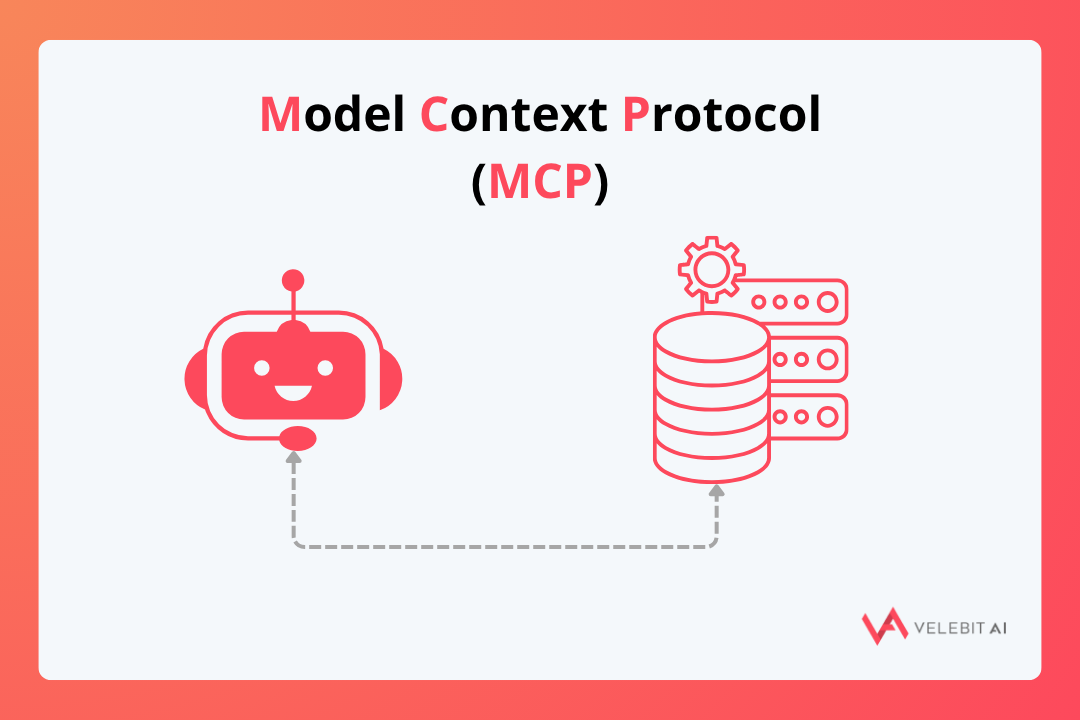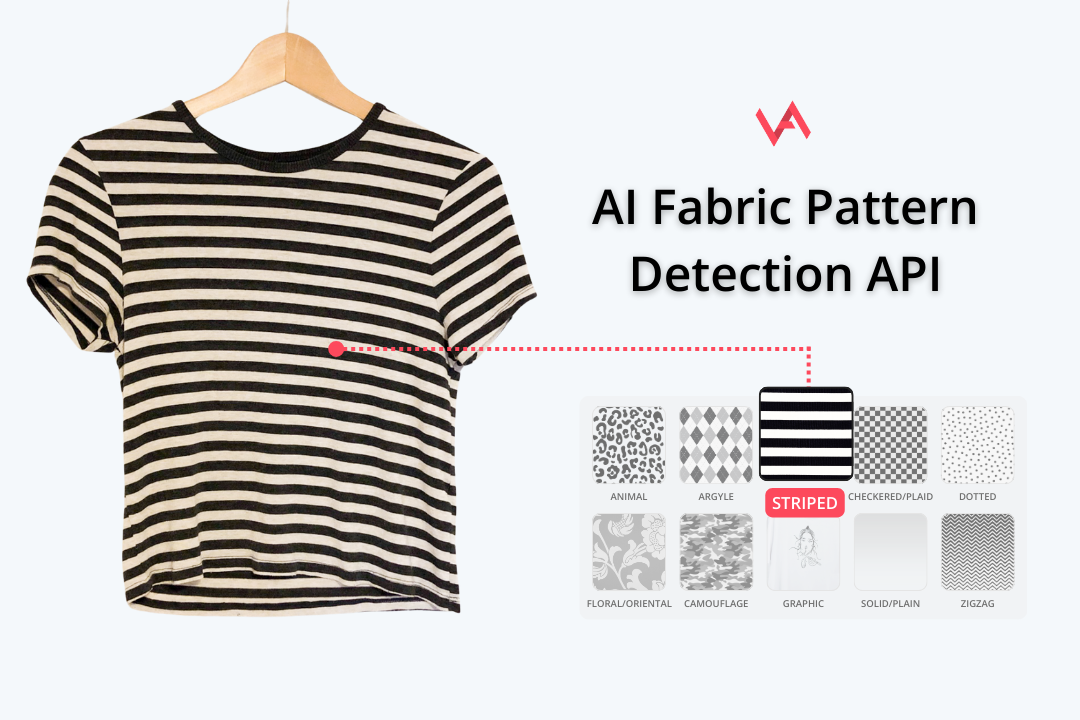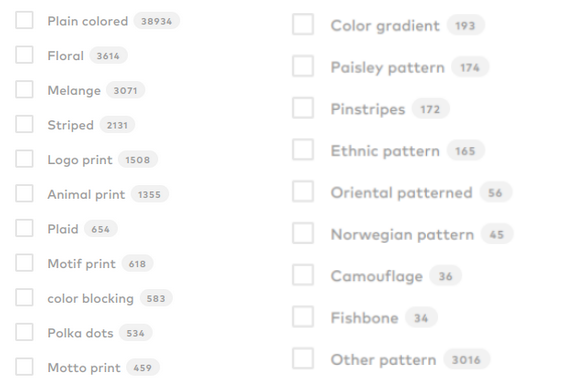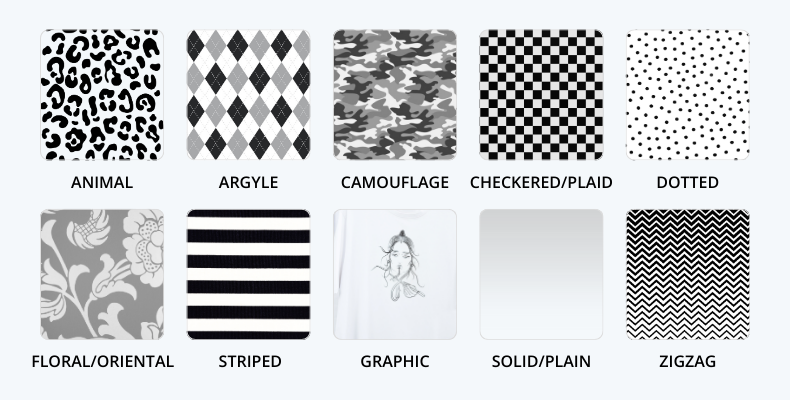


By Matej Škrabić on July 15, 2024
Imagine you’re browsing an online fashion store and finding exactly that checkered pattern shirt you’re looking for in seconds. Sounds like a dream, right? In the fast-paced world of e-commerce, every second counts and making the user experience seamless can make or break a sale.
Our Fabric Pattern Detection API automatically identifies textile patterns in product images, providing accurate categorization and product filtering instantly. This AI solution benefits both retailers and customers by improving the shopping experience and inventory management. In this blog, we’ll explore the ins and outs of this tool, possible use cases and the advantages it brings to e-commerce.
Fabric Pattern Detection API uses advanced AI algorithms to identify and categorize textile patterns in product images. These textile patterns play a crucial role in defining the style and aesthetic appeal of certain clothing or furniture items.
By using AI, online retailers can improve inventory management and automate the tagging of products with fabric patterns. This not only eliminates manual tagging but also significantly improves the shopping experience by enabling customers to quickly and accurately filter clothes by patterns that align with their specific style preferences.
Consider the typical online fashion shopper. They browse through countless items, considering price, color, style and trends. Patterns play an equally important role in expressing personal style, yet surprisingly, many leading online fashion retailers have not yet implemented robust pattern search filtering, missing a significant opportunity to improve user experience and boost sales. Below, you’ll find an example of a pattern search filter on an e-commerce site.


The absence of quality product filtering by fabric patterns limits users’ ability to navigate efficiently on online platforms and find what they are looking for quickly.
Integrating AI fabric pattern recognition in e-commerce platforms & online marketplaces presents a valuable opportunity to better meet the evolving needs of modern consumers, providing a seamless shopping experience and staying competitive in the market.
There are many patterns and trying to recognize them all is infeasible, so we’ve decided on the following 10 patterns, which are both representative (they cover a large portion of available clothing items) and detectable with high accuracy:

Within the floral/oriental category, there’s a spectrum of patterns ranging from traditional florals to intricate designs such as paisley, ikat and damask.
The zigzag category also contains multiple similar patterns: chevron, houndstooth, and herringbone.
Behind the API lies a machine learning model trained on hand-labeled photos of clothing items. Both catalog images and user-generated photos were used during training. This way the model learns to focus on the main object in the image, resulting in implicit background removal and allowing the model to achieve high accuracy on a wide range of fashion datasets.
The figure below illustrates the performance of the model, where we can see that even when it fails, the answers are understandable (for example, the zebra pattern in the first row is misclassified as “striped”).
Images in a green frame were correctly classified, while images with a red frame were misclassified, and above them are the model’s top 2 predictions. Images are from the publicly available Kaggle dataset, which was used only for evaluation.










The key features of our Fabric Pattern Detection API are:
The model performs well on both catalog and user-generated photos and can deal with poor lighting conditions, bad camera angles, and poor image quality in general. Although its primary application is for clothing items, it can be used for a wide range of images, such as fabrics, accessories, home decor items, and more!
Whether you’re processing just a few images or a very large dataset, the API is designed to scale with your needs and efficiently provide you with accurate predictions.
It can be used as a Software-as-a-Service (SaaS) deployed in the cloud or deployed on-premise to satisfy security requirements and privacy policy. The API is implemented as a REST JSON API, enabling easy integration with any backend or e-commerce system.
Last but not least, the model is highly customizable, making it possible for us to adjust it for your specific needs (per request). That includes changing the current categories or even adding new ones, as well as fine-tuning the model on your data to provide even more reliable pattern tagging.
You can try it for free when you sign up by clicking here.
Fabric Pattern Detection API is the latest among Velebit AI’s solutions and can be combined with our other products specifically designed for online marketplaces and e-commerce businesses.
It can be seamlessly integrated with other Velebit AI products:
Get in touch today if you want to automate e-commerce tasks with AI and improve product search & discoverability!
Technical and business lessons from real AI projects
Partner with us to develop an AI solution specifically tailored to your business.
Contact us